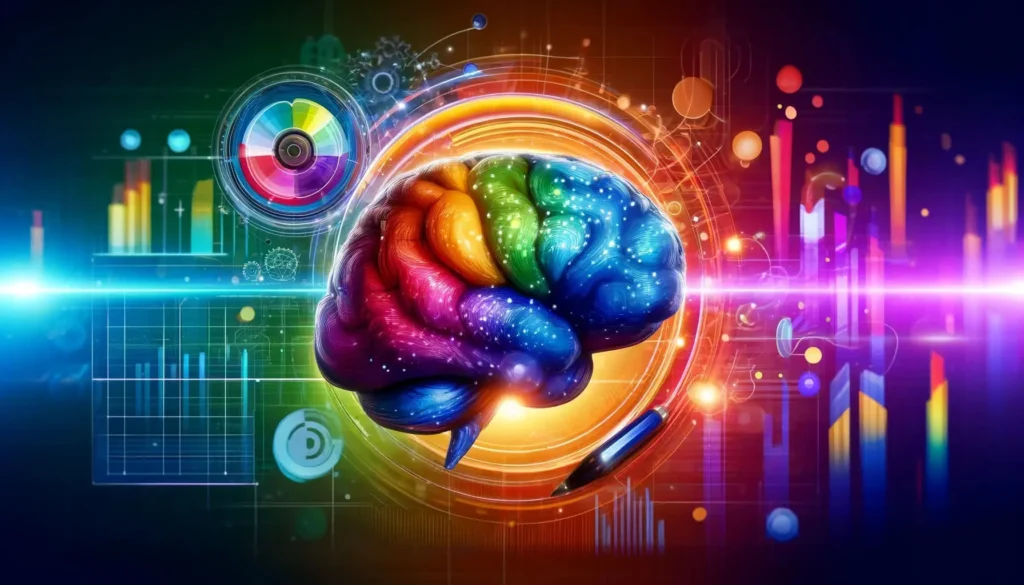
Absolutely! Here’s a complete article-style write-up for:
🎨 The Psychology Behind Color Choices in Game Environments
Color isn’t just visual—it’s emotional, psychological, and deeply tied to how we interpret the world around us. In video game design, color is a silent storyteller. It can set the tone of a scene, influence player behavior, evoke emotion, and even guide exploration—all without a single word.
When used with intention, color becomes one of the most powerful tools in environment design. Let’s dive into the psychology behind color choices and how you can use them to craft more immersive, meaningful, and memorable game worlds.
🧠 Why Color Psychology Matters in Games
Color affects:
- 🎭 Mood & Emotion – Colors subconsciously trigger emotional responses
- 🧭 Player Navigation – Brighter or contrasting colors can direct attention
- 🎨 World Identity – Color palettes define the aesthetic “feel” of a game
- 🕹️ Gameplay Feedback – Colors communicate danger, safety, status, and interactivity
Whether you’re designing a cozy village or a nightmare dimension, the right colors help players feel the difference instantly.
🌈 Core Color Emotions in Games
| Color | Psychological Impact | Common Use in Games |
|---|---|---|
| 🔴 Red | Urgency, aggression, danger, passion | Health alerts, enemies, dramatic cutscenes |
| 🔵 Blue | Calm, logic, melancholy, mystery | Menus, water, nighttime, sci-fi tones |
| 🟢 Green | Growth, safety, nature, stability | Forests, healing items, “go” indicators |
| 🟡 Yellow | Energy, curiosity, caution, joy | Puzzles, collectibles, pathfinding highlights |
| 🟠 Orange | Warmth, creativity, warning | Quest hubs, active zones, tutorial prompts |
| 🟣 Purple | Magic, mystery, royalty, spiritual | Portals, fantasy elements, rare items |
| ⚫ Black | Power, void, fear, elegance | Horror, death, endgame bosses |
| ⚪ White | Purity, peace, emptiness, clarity | Sacred spaces, death sequences, UI highlights |
🎯 Tip: The emotional impact of a color can vary with culture, contrast, and saturation. Test with your audience!
🖼️ How Color Shapes Game Worlds
1. Setting the Mood
Color schemes shape the emotional tone of entire areas.
- Muted blues and grays → sadness, decay, isolation (Inside, Limbo)
- Warm reds and oranges → action, heat, tension (Doom, Hades)
- Soft greens and pastels → peace, comfort, nostalgia (Animal Crossing, Spiritfarer)
- High contrast neons → energy, chaos, artificiality (Cyberpunk 2077, Hotline Miami)
🧠 Design Tip: Pick a base palette per region or level, and subtly vary it for mood shifts or narrative progression.
2. Guiding Player Behavior
Color can act as an invisible signpost:
- 🔆 Bright yellow/orange often marks interactive objects (e.g., climbable ledges in Uncharted)
- 💡 Light sources or warm tones naturally draw the eye—perfect for guiding players toward objectives
- ⚠️ Red = Danger zones, traps, or enemies
- ✅ Green = Safe zones, checkpoints, or healing areas
🎮 Game Example: Portal uses stark white environments contrasted with colorful portals to focus your attention exactly where the puzzle wants it.
3. Defining Game Identity
Every iconic game world has a signature palette:
- 🧊 Journey: Warm desert oranges and reds → spiritual discovery
- 🔮 Hollow Knight: Desaturated blues and blacks → melancholic mystery
- 💫 The Legend of Zelda: Breath of the Wild: Pastel greens and blues → serenity and adventure
- 🧬 Control: Stark whites, deep reds, and moody grays → brutalist realism + supernatural tension
🧠 Design Tip: Use a palette board early in dev to define your world’s tone, and build environment art around that core set.
4. Communicating Game States
Colors provide quick visual feedback to players during gameplay:
- Health bars (green → yellow → red)
- Cooldowns (blue for ready, gray for inactive)
- Stealth vs. alert status (calm blue → bright red)
- Weapon or ability types (e.g., red for fire, blue for ice, purple for void)
🧪 Game Example: Dead Cells uses three core colors (red, green, purple) for weapon/skill scaling—simplifying complex choices into intuitive color decisions.
🎮 Games That Master Color Psychology
| Game | Palette Use | Impact |
|---|---|---|
| Inside | Grayscale with splashes of red | Heightens tension and visual focus |
| Hollow Knight | Muted tones, glowing accents | Enhances mystery and exploration |
| Firewatch | Warm oranges & purples | Emphasizes loneliness, beauty, and surrealism |
| Celeste | Pastel gradients vs. harsh reds | Reflects mental struggle and danger |
| DOOM Eternal | Intense reds and greens | Fuels adrenaline and fast-paced action |
| ABZÛ | Deep blues and golds | Evokes calm, wonder, and spiritual depth |
🛠️ Practical Tips for Using Color in Game Environments
✅ Start with emotion, not aesthetics – What do you want the player to feel in this scene? Start there.
✅ Use contrast with purpose – A bright color in a muted world shouts. Use it to guide or warn.
✅ Consider accessibility – Avoid color-dependent mechanics that exclude colorblind players. Use shapes, motion, or sound as backup cues.
✅ Test in motion – A static color scheme might feel different once gameplay elements (particles, movement, lighting) are layered on.
✅ Build color progression – Use color shifts to reflect narrative change, like seasons, character arcs, or moral alignment.
🌅 Final Thought
Color is more than eye candy—it’s emotional language. The right palette can whisper comfort, scream danger, or hum with mystery. In the hands of a thoughtful designer, color transforms pixels into places, and players into participants in a mood, a memory, or a moment.
So next time you’re building a dungeon, city, or dreamscape, ask yourself: What does this color make the player feel—and why?
Need help crafting your game’s emotional color palette, or building color-coded systems that enhance gameplay and immersion? Let’s paint your world with purpose. 🎨🕹️